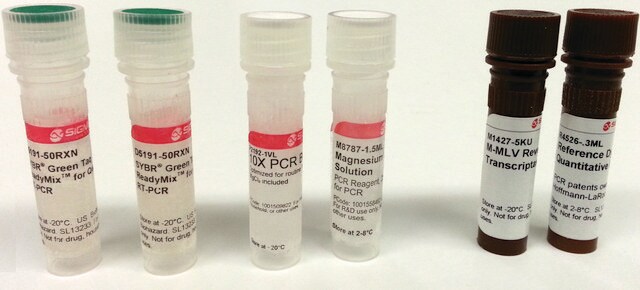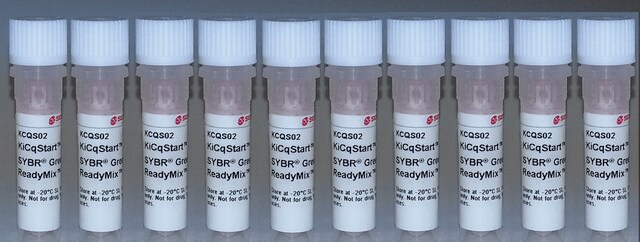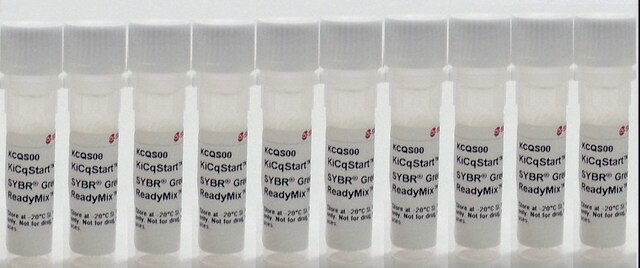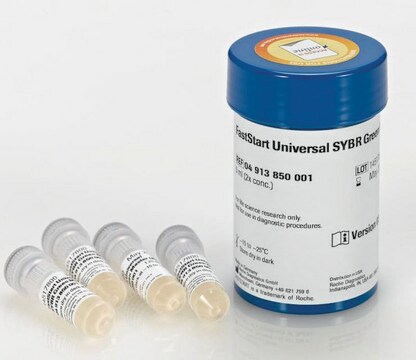MAK136
Monoamine Oxidase Activity Assay Kit
sufficient for 100 fluorometric tests
Synonym(s):
MAO Assay Kit
Sign Into View Organizational & Contract Pricing
All Photos(1)
About This Item
UNSPSC Code:
12161503
NACRES:
NA.84
Recommended Products
usage
sufficient for 100 fluorometric tests
detection method
fluorometric
relevant disease(s)
neurological disorders
storage temp.
−20°C
Gene Information
human ... MAOA(4128) , MAOB(4129)
mouse ... MAOA(17161) , MAOB(109731)
rat ... MAOA(29253) , MAOB(25750)
General description
Monoamine oxidases (MAO, EC 1.4.3.4) are a family of mitochondrial enzymes that catalyze the oxidative deamination of monoamines. In mammals, MAO consists of two isoenzymes, MAO-A and MAO-B. MAO dysfunction is thought to be responsible for a number of neurological disorders. Unusually high or low levels of MAO in the body have been associated with depression, schizophrenia, substance abuse, attention deficit disorder, migraines, and irregular sexual maturation. MAO inhibitors are one of the major classes of drug prescribed for the treatment of depression.
Application
Monoamine Oxidase Activity Assay Kit has been used to estimate MAO-A (monoamine oxidase A), MAO-B (monoamine oxidase B) and ALDH (aldehyde dehydrogenase) activities.
Features and Benefits
Compatible with high-throughput handling systems.
Suitability
Suitable for the determination of MAO activity in biological samples and for the screening of MAO inhibitors. Can determine either MAO-A, MAO-B or both MAO-A and MAO-B activity.
Principle
The Monoamine Oxidase Assay Kit provides a convenient fluorimetric means to measure MAO enzyme activity in biological samples. In the assay, MAO reacts with p-tyramine, a substrate for both MAO-A and MAO-B, resulting in the formation of H2O2, which is determined by a fluorimetric method (λex = 530/λem = 585 nm). The assay is simple, sensitive, stable, and high-throughput adaptable. Unit definition: one unit of MAO catalyzes the formation of 1 μmole of H2O2 per minute under the assay conditions.
Storage Class Code
10 - Combustible liquids
Certificates of Analysis (COA)
Search for Certificates of Analysis (COA) by entering the products Lot/Batch Number. Lot and Batch Numbers can be found on a product’s label following the words ‘Lot’ or ‘Batch’.
Already Own This Product?
Find documentation for the products that you have recently purchased in the Document Library.
Lovedeep Singh et al.
Metabolic brain disease, 36(1), 111-121 (2020-09-02)
Pain and depression are often co-existing pathological states that promote mutual severity resulting in limited efficacy of current treatment strategies. Thus, there is a need to develop an efficacious alternate treatment regimen for pain-depression dyad. Skimmetin and osthole are molecules
Proteome Profiling of Primary Pancreatic Ductal Adenocarcinomas Undergoing Additive Chemoradiation Link ALDH1A1 to Early Local Recurrence and Chemoradiation Resistance.
Oria V O, et al.
Translational Oncology, 11(6), 1307-1322 (2018)
Mesencephalic Astrocyte-Derived Neurotrophic Factor (MANF) Elevates Stimulus-Evoked Release of Dopamine in Freely-Moving Rats.
Renko J M, et al.
Molecular Neurobiology, 1-14 (2018)
Juho-Matti Renko et al.
Molecular neurobiology, 55(8), 6755-6768 (2018-01-20)
Neurotrophic factors (NTFs) hold potential as disease-modifying therapies for neurodegenerative disorders like Parkinson's disease. Glial cell line-derived neurotrophic factor (GDNF), cerebral dopamine neurotrophic factor (CDNF), and mesencephalic astrocyte-derived neurotrophic factor (MANF) have shown neuroprotective and restorative effects on nigral dopaminergic
Begum Evranos-Aksoz et al.
Combinatorial chemistry & high throughput screening, 20(6), 461-473 (2017-05-06)
Depression is a momentous disease that can greatly reduce the quality of life and cause death. In depression, neurotransmitter levels such as serotonine, dopamine and noradrenaline are impaired. Monoamine oxidases (MAO) are responsible for oxidative catalysis of these monoamine neurotransmitters.
Our team of scientists has experience in all areas of research including Life Science, Material Science, Chemical Synthesis, Chromatography, Analytical and many others.
Contact Technical Service




